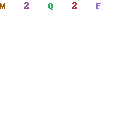By: Sukarno Dian *
Contrary to the results of data collection that has been done and in accordance with the data collection methods that have been described in previous chapters, data that could potentially be used to determine the center of Kuna in Watugaluh Mataram. Jombang. The data obtained are quite varied. Which archaeological data (inscriptions, temple artifacts and findings), ethnographic data (folklore, myth, legend). Spatial distribution of the data not only from the village Watugaluh, sub Diwek, Jombang, but also in almost all districts Jombang (some districts). By ignoring the separation of administrative districts now, researchers hope to better see the condition of Old Mataram more widely both spatially and temporally. So it boils down to a deal lies in the Earth's Ancient Mataram Jombang based on the findings of the data obtained.
Under these exposure-related data in the Earth's Ancient Mataram Jombang successfully obtained:
A. Data Inscription
A number of inscriptions found around Jombang and found out Jombang but has the potential to be associated with the Mataram Ancient East Java:
A. Turyyan inscription 851 Saka (929 AD)
Watu Godeg found in the village, the village of Responsibility, Turen district, district Malang. This inscription is still in place was first discovered. According to the readings made Damais (1955), this inscription of the Maharaja of Rake issued by Sri Sri Isawikrama Hino Dyah Sindok Dharmotunggawijaya. Sadly the inscription is made of stone that reads 126x117 cm on either side, partially broken stone and some characters have been worn so hard to read. This inscription contains the application Dang Pu Sahitya Atu to get a plot of land for the manufacture of sacred buildings. Damais (1955) convert the inscription pertanggalan on July 24th 929 AD. At the end of the inscription stated that King Pu Sindok starting capital at Tamwlang. The location of this Tamwlang according to the researchers suspected Tembelang village, district Tembelang (± 5 km north of Jombang).
2. Poh Rinting inscription Saka 851 (929 AD)
Found in the village Glagahan, Perak district, Jombang district, until now kept in museums Mojokerto (no. inventory 82). Epigraphy expert readings of this inscription issued by Dang Acaryya (her name illegible), the contents of the inscription of the village of Poh Rinting determination based on the application Dang Acaryya because of the village there is a sacred building. Petition is granted by the king with the obligation to preserve the community around the holy building. Pertanggalan this inscription by Damais (1955) converted to 23 October 929 AD.
3. Geweg inscription 855 Saka (933 AD)
Located in the village of landmarks, districts Peterongan, Jombang district. This inscription is still in place was first discovered. Conditions of this inscription is worn so that the letters - the letters are relatively difficult to read. But from the letters - letters that have not been worn and carved inscriptions note that is issued by Sri Mahamantri Pu Rakyan Sindok Sanottunggadewawijaya with Rakryan Sri Sri Sri Parameswari Warddhani KBI regarding the determination of Pu village Geweg as sima. According Damais (1955) this inscription berpertanggalan August 14 933 BC.
4. Anjukladang inscription 859 Saka (937 AD)
Found on page Candi Lor, Candirejo village, district Loceret, Nganjuk district. This inscription is converted bertitimangsa 10 April 937 AD ( http://www.nganjukkab.go.id ). adopted from an article published in SUARA PENDIDIKAN JOMBANG website.










